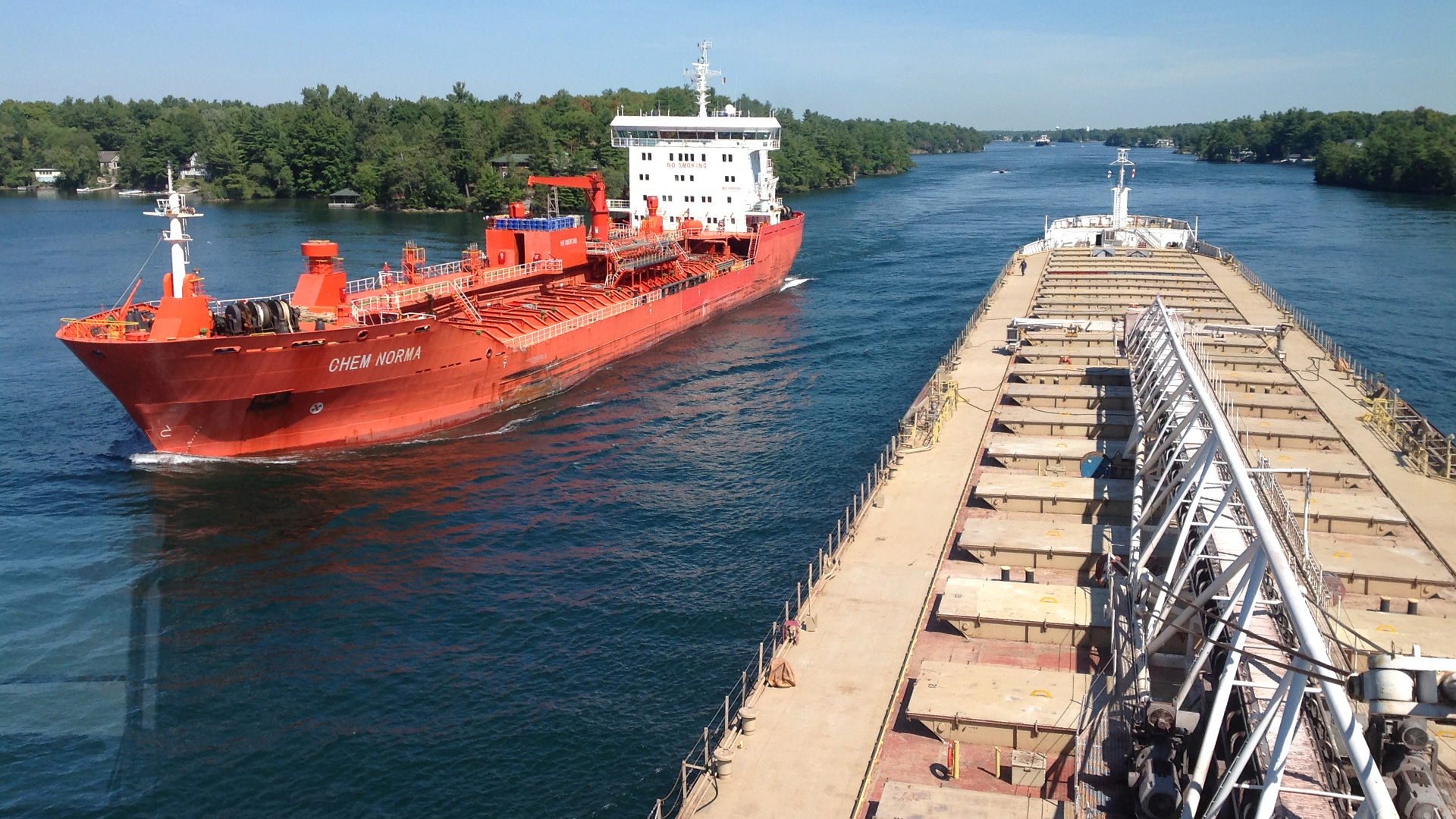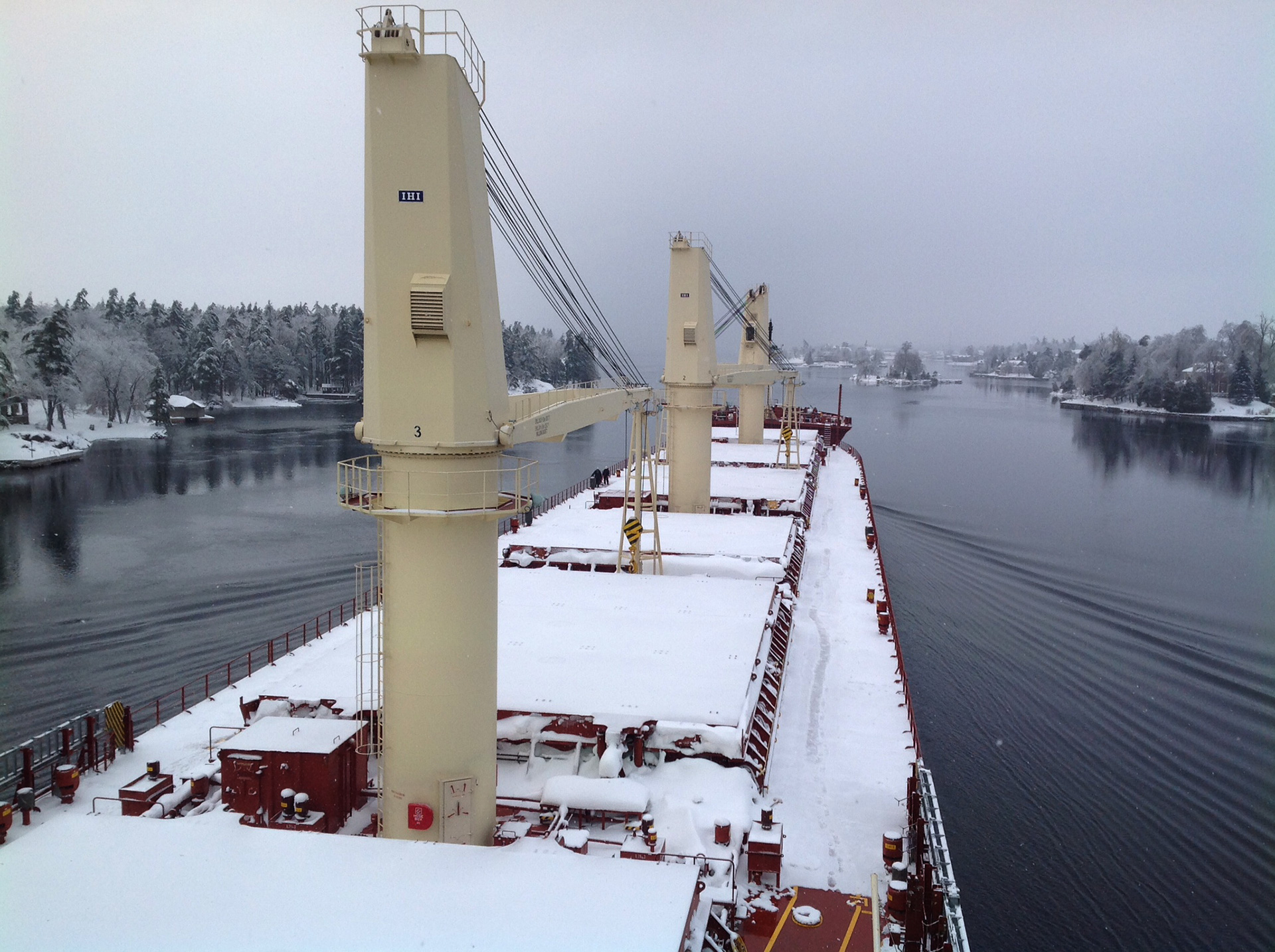Upper St. Lawrence Pilots
Contact
Capt. Glenn Lawrence
President, Corporation of Upper St. Lawrence Pilots
289-214-1019
The Corporation of Upper St. Lawrence Pilots was established in 1961 to deliver pilotage services in International District 1 of the Great Lakes Region. The district extends westward along the St. Lawrence River, starting at Snell Lock near Cornwall, and continues westward through Lake St. Lawrence, the environmentally sensitive waters of the Thousand Islands region, and ends at Lake Ontario.

Our Pilots
The members of the Corporation of Upper St. Lawrence Pilots work in a district that requires a wide variety of skills and considerations to successfully navigate through the constantly changing, challenging, yet quite different, circumstances.
The pilots are highly-experienced mariners, holding various certificates of competency, and usually have served for several years as Masters on vessels navigating the waters of the Great Lakes Region. They have superior ship-handling skills and extensive local knowledge of the District, tested through comprehensive written and oral examinations. Successful candidates then undergo practical training, with assignments on a variety of vessel types under the direct supervision of an experienced pilot. Based on additional written, oral and practical examinations, a panel of senior pilots, along with the federal government, then evaluate trainees’ readiness to be licensed by the federal government as fully-qualified pilots.
As a result, District 1 pilots possess an extraordinary degree of expertise and local knowledge of the area in which they operate. There are some 10 Canadian licensed pilots working in the District. As is the case in other Great Lakes international districts, pilotage assignments are shared between Canadian and U.S. pilots, which encompasses both U.S. and Canadian territorial waters.

Special Characteristics of Pilotage
The local conditions throughout District 1 are notably varied, and often present significant navigational challenges.
The District’s locks require very precise ship handling, with large ships requiring careful maneuvering; ice conditions at the beginning and the end of each season present their own set of difficulties; the shipping channel is often very narrow, again calling for expert ship-handling; constant monitoring is needed to maintain optimal vessel speed with different speed limits in different zones, frequently requiring orders to change speed and, as a result, a need to adapt the vessel’s conduct to varying hydrodynamic effects.
All pilotage assignments through the District call for excellent docking skills, as pilots frequently have to secure on the approach walls at the various locks, without the use of tugs, meaning that pilots must maintain a “tie-up and let-go” proficiency second to none. Assignments can also be very long; when travelling against the current, trip times can last between 10 and 14 hours. If pilot availability is limited, a single pilot sometimes does the entire passage without relief, always alert and guarding against the possibility of fatigue.
International District 1 covers some of the most beautiful sections of the St. Lawrence River system, including the Thousand Islands National Park. Aside from its rugged beauty, the area is rich in biodiversity, with a microclimate resulting from the moderating influence of the warmer waters of the Great Lakes being funneled into the St. Lawrence. The fragile, integrated ecosystem, containing marine life and wetlands, must be protected. The Upper St. Lawrence pilots play an essential role in making sure the waterway can safely perform its function as a key commercial artery, while safeguarding a fragile environment that supports so much flora and fauna, as well as providing dozens of communities with a safe supply of fresh water.

